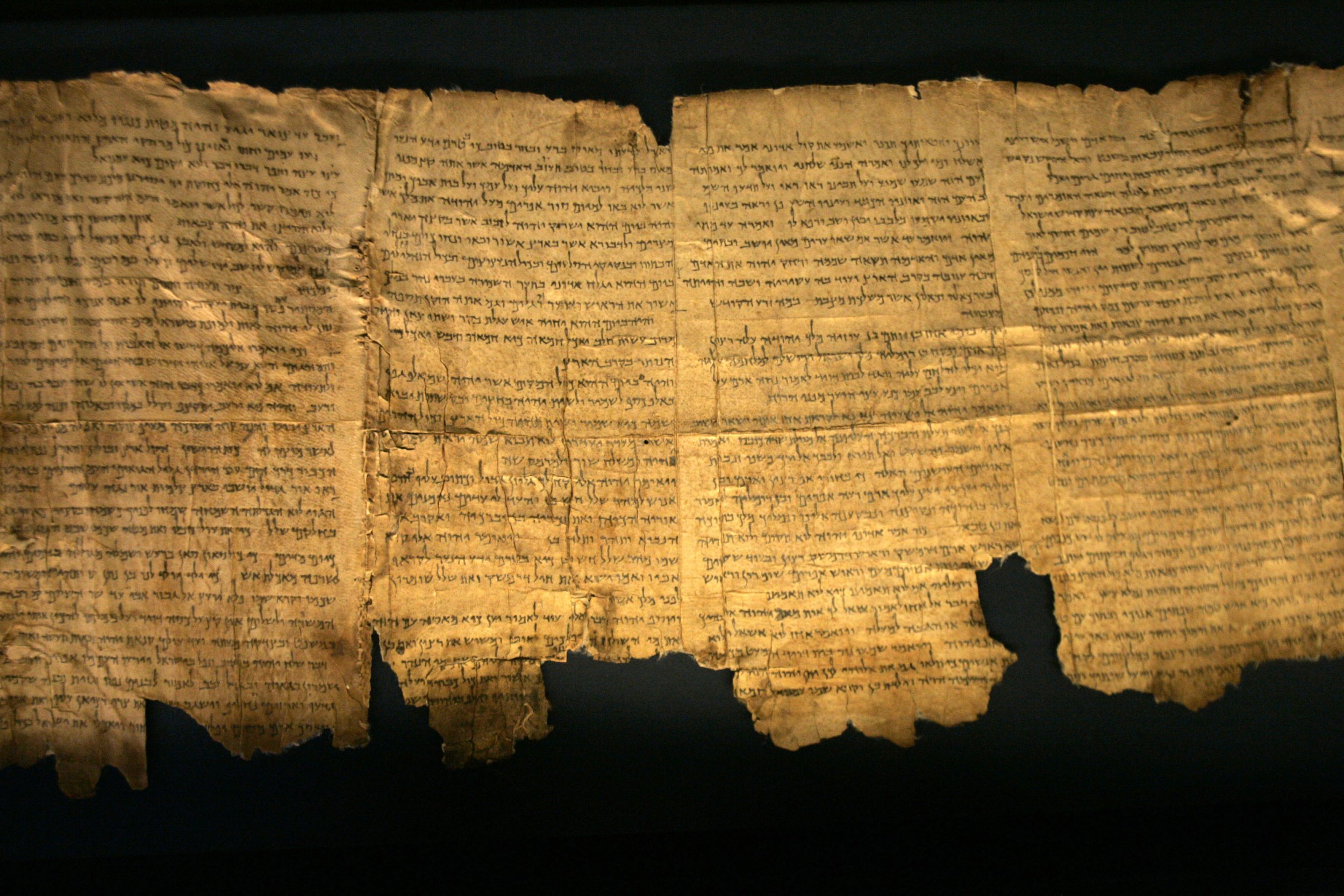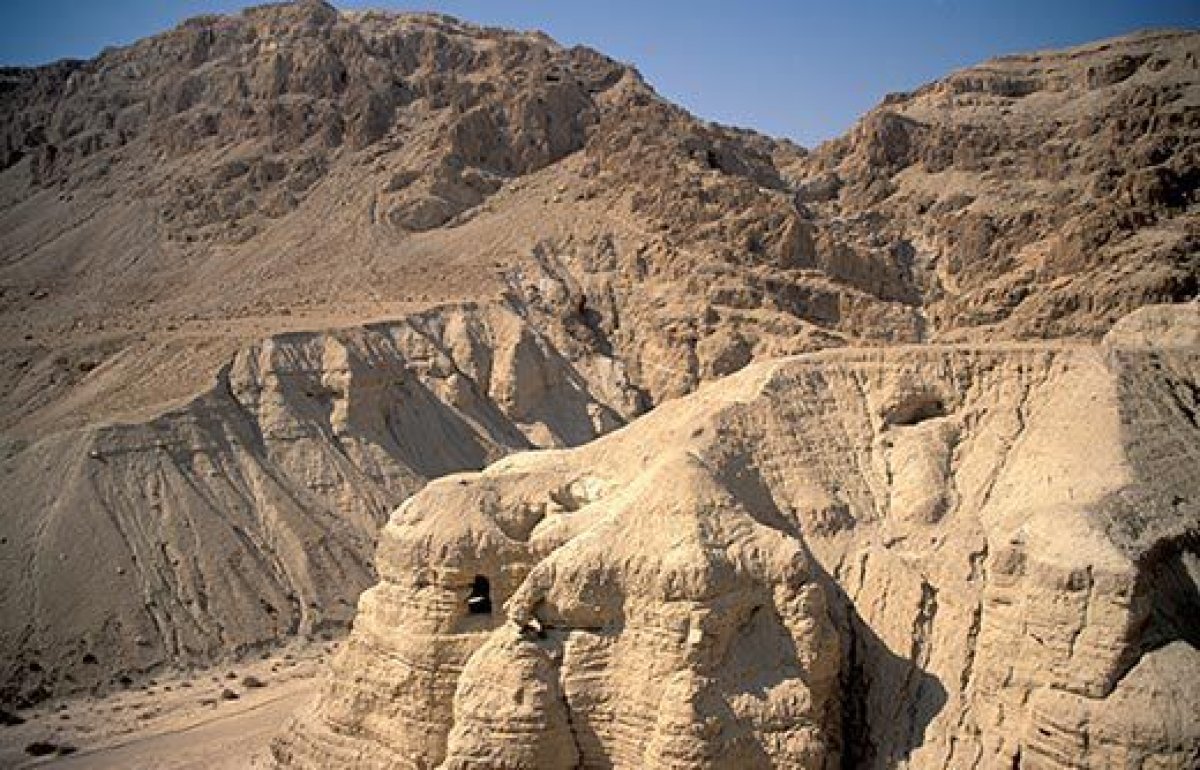
Dozens of skeletons discovered in the Judean Desert may finally reveal who wrote the famous Dead Sea Scrolls, a mystery that scientists and historians have been trying to solve for more than 50 years. The scrolls contain fragments from nearly every part of the Old Testament.
The 33 human skeletons were found buried at Qumran, near the caves where the scrolls were originally discovered (they're alternately known as the Qumran Caves Scrolls). The people they belonged to may have been alive when the texts were written and placed inside the caves; they could possibly be the authors themselves.
Researchers have already performed a radiocarbon analysis on one of the bones and estimate that it is about 2,200 years old, which lines up with the timeframe in which the scrolls are believed to have been written (roughly 150 B.C. to 70 A.D.). Yossi Nagar, an anthropologist with the Israel Antiquities Authority who helped the researchers analyze the skeletons, presented the findings November 16 at an annual meeting of the American Schools of Oriental Research.
"I don't know if these were the people who produced the Qumran region's Dead Sea Scrolls," Nagar told Science News. "But the high concentration of adult males of various ages buried at Qumran is similar to what has been found at cemeteries connected to Byzantine monasteries."
The Dead Sea Scrolls were recovered from 11 caves in the West Bank between the late 1940s and the mid 1950s, after first being discovered in one cave by a shepherd. They comprise hundreds of documents and thousands of fragments; the authenticity of some has been debated over the years.
The question of who wrote them is remained closely tied to the question of who exactly the Qumran inhabitants were. One theory—to which the skeletons might lend credence—is that Qumran was populated by a celibate Jewish sect called the Essenes, who either wrote the manuscript themselves or served as their custodians (the scrolls were written in Hebrew, Aramaic, and Greek). Other possible explanations include Qumran being a community of Bedouin herders or even Roman soldiers. Nagar told Science News he can't confirm the skeletons belonged to Essenes, but that at the very least they probably came from celibate men.

The skeletons were initially discovered in 2016. Subsequent analysis has shown that all the bodies buried at the Qumran cemetery were most likely male. Three of the skeletons were too badly degraded to guess if they'd been genetically male or female, but Nagar concluded that the other 30 were either conclusively male or at least showed no signs of being female.
Jonathan Rosenbaum, a professor of Jewish Studies at Gratz College in Melrose Park, Penn, told Science News that DNA analysis should be able to confirm that most or all of the skeletons were male. Nagar, however, wasn't sure if there were plans in the works to take DNA samples. For now, after the removal of a few small bones samples, the skeletons have been reinterred in the graves in which they were found.
A 12th cave was reported in September 2017. No scrolls were found inside, which in itself was a significant discovery; it meant the scrolls had at some point been looted. "This exciting excavation is the closest we've come to discovering new Dead Sea scrolls in 60 years. Until now, it was accepted that Dead Sea scrolls were found only in 11 caves at Qumran, but now there is no doubt that this is the 12th cave," excavation director Oren Gutfeld of the Hebrew University's Institute of Archaeology said in a statement. "Finding this additional scroll cave means we can no longer be certain that the original locations (Caves 1 through 11) attributed to the Dead Sea scrolls that reached the market via the Bedouins are accurate."
Uncommon Knowledge
Newsweek is committed to challenging conventional wisdom and finding connections in the search for common ground.
Newsweek is committed to challenging conventional wisdom and finding connections in the search for common ground.
About the writer
Kastalia Medrano is a Manhattan-based journalist whose writing has appeared at outlets like Pacific Standard, VICE, National Geographic, the Paris Review Daily, ... Read more
To read how Newsweek uses AI as a newsroom tool, Click here.








